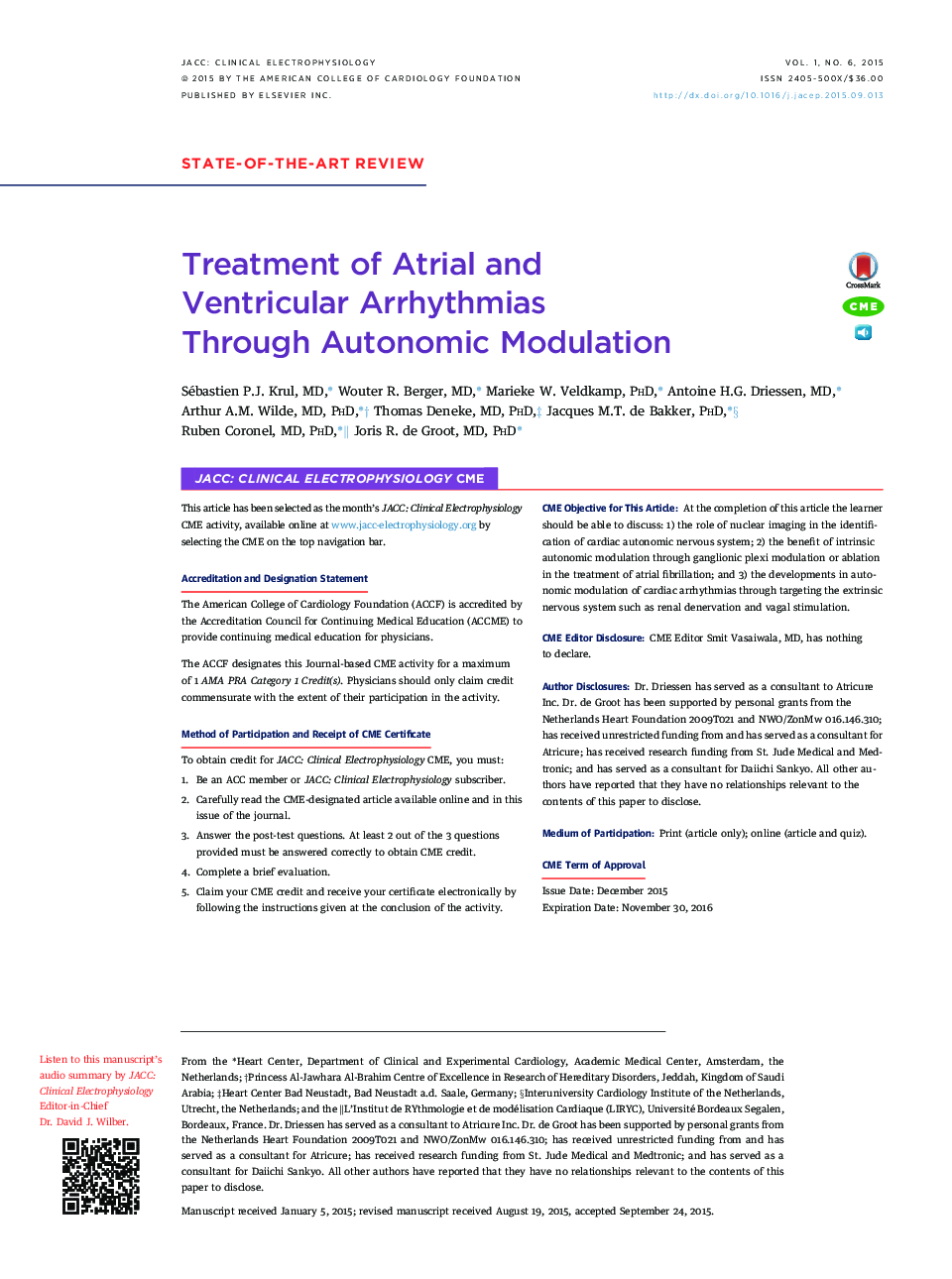| Article ID | Journal | Published Year | Pages | File Type |
|---|---|---|---|---|
| 2942265 | JACC: Clinical Electrophysiology | 2015 | 13 Pages |
This paper reviews the contribution of autonomic nervous system (ANS) modulation in the treatment of arrhythmias. Both the atria and ventricles are innervated by an extensive network of nerve fibers of parasympathetic and sympathetic origin. Both the parasympathetic and sympathetic nervous system exert arrhythmogenic electrophysiological effects on atrial and pulmonary vein myocardium, while in the ventricle the sympathetic nervous system plays a more dominant role in arrhythmogenesis. Identification of ANS activity is possible with nuclear imaging. This technique may provide further insight in mechanisms and treatment targets. Additionally, the myocardial effects of the intrinsic ANS can be identified through stimulation of the ganglionic plexuses. These can be ablated for the treatment of atrial fibrillation. New (non-) invasive treatment options targeting the extrinsic cardiac ANS, such as low-level tragus stimulation and renal denervation, provide interesting future treatment possibilities both for atrial fibrillation and ventricular arrhythmias. However, the first randomized trials have yet to be performed. Future clinical studies on modifying the ANS may not only improve the outcome of ablation therapy but may also advance our understanding of the manner in which the ANS interacts with the myocardium to modify arrhythmogenic triggers and substrate.
